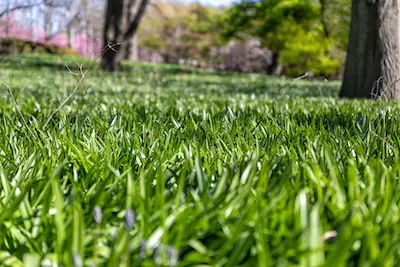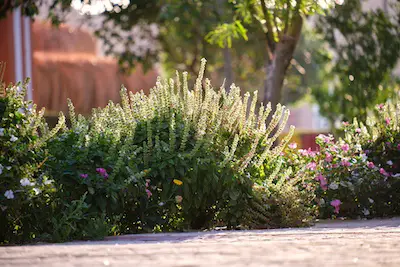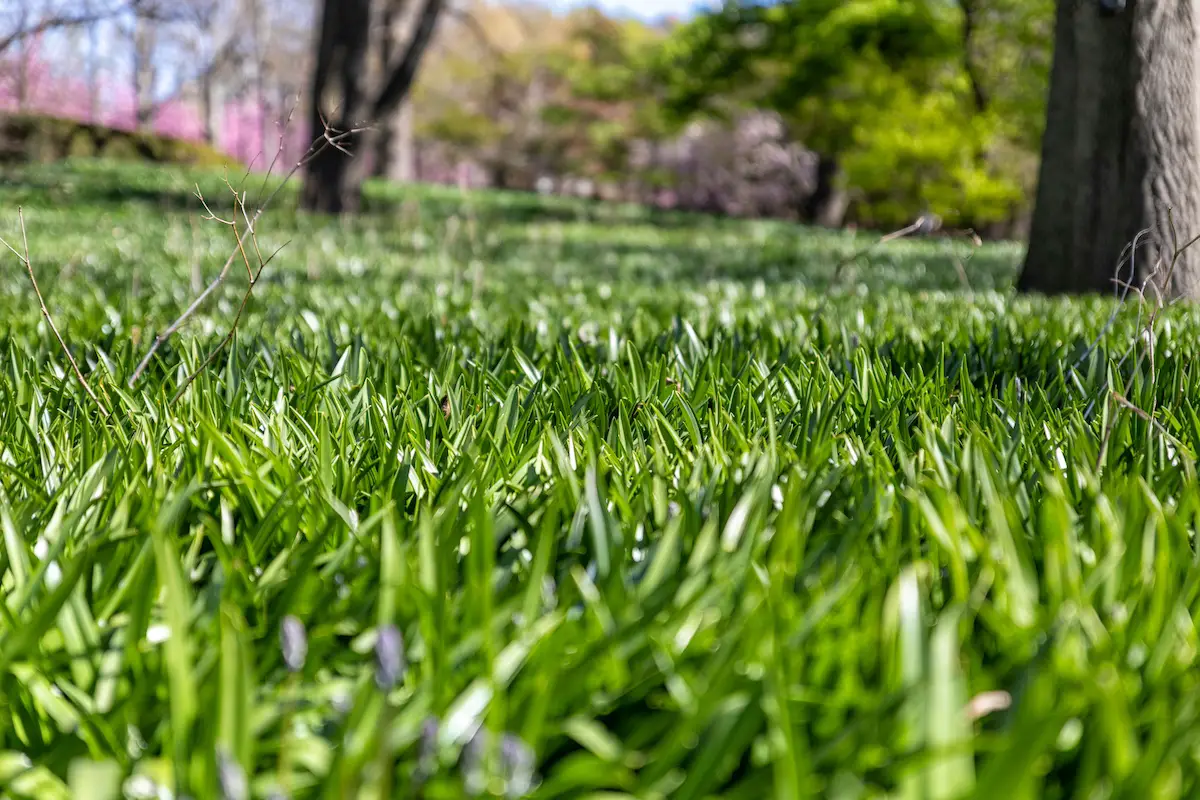When it comes to taking care of our lawns through eco-friendly lawn care, it’s essential to look beyond just keeping them green and lush. A key element that often gets overlooked is the health of the soil underneath.
In this article, we will explore the significant role soil health plays in sustaining not only our lawns but also the broader environment. By focusing on practices that benefit the soil, we can achieve more vibrant lawns and contribute positively to our planet’s health.
Soil Health Management for Eco-Friendly Lawn Care
When we talk about eco-friendly lawn care, we’re discussing practices that not only keep our lawns looking lush and green but also benefit the environment.
A key factor that’s often overlooked in this conversation is the health of the soil beneath our lawns. Let’s dive into why soil health is critical for sustainable lawn care and how it influences the overall ecosystem.

What is Soil Health?
Soil health refers to the condition of the soil in your garden or lawn. Healthy soil is full of life, teeming with microorganisms, insects, and worms that all play a crucial part in maintaining the ecosystem.
It has the right balance of air, water, minerals, and organic matter, which allows plants to grow strong and resilient. In the context of lawn care, healthy soil supports grass roots, helps retain water, and naturally reduces pests.
Why is Soil Health Important for Eco-Friendly Lawn Care?
- Supports Plant Growth: The root of a thriving lawn lies in the health of the soil. Healthy soil provides essential nutrients to grass, reducing the need for chemical fertilizers that can harm the environment.
- Water Retention: Soil with good structure and organic matter holds water more efficiently. This means less watering, which conserves water and saves energy.
- Natural Pest Resistance: Balanced soil fosters a living ecosystem that can naturally suppress common garden pests, reducing the need for chemical pesticides.
- Carbon Storage: Healthy soil plays a vital role in capturing carbon from the environment, helping to mitigate climate change. This process also benefits your lawn by improving soil structure and fertility.
How to Maintain Soil Health for Eco-Friendly Lawn Care
- Avoid Compaction: Regular foot traffic can compact the soil, making it hard for roots to penetrate and for air and water to circulate. Aerating your lawn annually can help alleviate compaction.
- Add Organic Matter: Compost is a gardener’s best friend. Spreading organic compost on your lawn introduces beneficial microorganisms and nutrients into the soil, enhancing its structure and fertility.
- Practice Proper Watering: Overwatering can lead to shallow root systems and contribute to runoff, which can strip away nutrients. Water deeply but less frequently to encourage strong root growth and conserve water.
- Embrace Diversity: Consider incorporating clover or other legumes into your lawn. These plants fix nitrogen from the air, reducing the need for synthetic fertilizers, and they promote a more diverse and resilient lawn ecosystem.
- Test Your Soil: Understanding the specific needs of your soil is crucial. A simple soil test can reveal pH imbalances and nutrient deficiencies, allowing you to tailor your lawn care practices more effectively.
By focusing on the health of your soil, you embrace a key component of eco-friendly lawn care. Not only does this approach lead to a more vibrant and resilient lawn, but it also supports a healthier planet. Remember, every step toward improving soil health is a step toward a more sustainable and eco-conscious gardening practice.

Choosing Sustainable Lawn Varieties
In a world where the call for environmental preservation is louder than ever, selecting sustainable lawn varieties stands out as a key player in the eco-friendly gardening game. This choice not only mirrors an individual’s commitment to conservation but also brings a plethora of benefits to your green space.
Here, we dive into the core advantages of adopting sustainable lawn varieties for those eager to make a greener choice in their gardening practices.
Water Conservation: A Major Plus in Eco-Friendly Lawn Care
One of the primary benefits of choosing sustainable lawn varieties is their ability to thrive with less water. Traditional lawns can be notorious for their thirst, oftentimes demanding extensive irrigation to maintain their verdant appearance.
Sustainable varieties, on the other hand, are bred or selected for their resilience and ability to flourish even in drier conditions. This trait not only slashes your water usage—a boon for our planet’s dwindling freshwater resources—but also translates to lower utility bills, keeping your wallet content.
Chemical Reduction: Towards a Toxin-Free Environment
Sustainable lawns are superheroes in reducing chemical use in our environment. Traditional lawn care can involve a cocktail of pesticides and fertilizers to fend off pests and diseases, risking harm to local wildlife, pollinators, and even your family’s health.
Sustainable varieties, however, are chosen for their robustness against common lawn afflictions, minimizing or even eliminating the need for these chemical interventions. By opting for these grasses, you’re fostering a safer, toxin-free habitat in your backyard.
Biodiversity Boost: Encouraging Eco-Friendly Lawn Care Habitats
A step toward sustainable lawn varieties is a leap toward enhancing biodiversity. Traditional single-species lawns are akin to a monoculture, offering little to local wildlife. Sustainable lawns, diversely populated with a mix of grasses and occasionally other flora, create a more inviting space for a variety of insects, birds, and small mammals.
This diversity not only makes your lawn a living ecosystem but also aids in the natural pest control process, reducing the need for human intervention.
Reduced Maintenance: A Time and Effort Saver in Eco-Friendly Lawn Care
Who wouldn’t love a stunning lawn that demands less time and effort? Sustainable lawn varieties are known for their low-maintenance character. They generally grow slower and are more adept at competing with weeds, reducing the need for frequent mowing and weeding. This means you can spend more time enjoying your garden and less time laboring over it. Less maintenance also means a smaller carbon footprint, as fewer mowings translate to less use of gas-powered lawn equipment, which is notorious for emissions.
Climate Resilience: Ready for the Future
As our global climate continues to change, having a lawn that can withstand these shifts becomes crucial. Sustainable lawn varieties are often more capable of handling extreme weather conditions, be it intense heat waves or unanticipated droughts.
Their resilience not only ensures that your lawn remains a serene green oasis but also preserves soil health and prevents erosion, crucial for maintaining your garden’s foundation.
In conclusion, the selection of sustainable lawn varieties is not merely a gardening choice but a statement of environmental stewardship. It brings with it numerous benefits, from water conservation and chemical reduction to fostering biodiversity, simplifying maintenance, and preparing for climate change.
As gardeners, choosing sustainable lawns aligns us closer to the rhythm of nature, ensuring that our green spaces contribute positively to the well-being of our planet. This approach allows us to enjoy beautiful, thriving gardens that mirror our commitment to an eco-friendlier future.
Water Conservation Techniques for Eco-Friendly Lawn Care
When considering water conservation in lawn care, selecting the right types of plants plays a vital role. Native plants, those that occur naturally in a specific region, are adapted to the local climate and soil conditions.
This means they require less water, are more resistant to pests and diseases, and provide essential benefits to the local ecosystem. Here’s how homeowners can effectively incorporate native plants into their lawn care routine for a more water-efficient garden.
Understand Your Local Ecosystem
Start by researching the native plants of your area. Understand the climate, soil type, and typical rainfall patterns. This information is crucial as it will guide you in selecting plants that thrive naturally in your environment without needing excessive watering.
Consult Local Gardening Experts
Visit local nurseries or extension services that specialize in native plants. Experts there can provide valuable advice on which plants are best suited for your lawn’s specific conditions. They can also offer tips on proper plant care and maintenance.
Plan Your Garden Layout
Consider the layout of your garden and where each plant will go. Group plants with similar water needs together to make watering more efficient. You want to ensure that each plant receives the right amount of water without wasting it on plants that need less.
Reduce Lawn Size
Consider reducing the size of your traditional grass lawn, which often requires a lot of water, and replace it with native ground covers. These plants are low-maintenance, resist drought, and can provide a beautiful and sustainable alternative to grass.
Mulch Around Plants
Applying a layer of mulch around your plants helps retain soil moisture, reducing the need for watering. Mulch also suppresses weeds, which compete with your plants for water, and adds organic matter to the soil as it decomposes.
Benefits of Using Native Plants for Eco-Friendly Lawn Care
Incorporating native plants into your lawn care routine offers multiple advantages beyond water conservation. It attracts local wildlife like bees, butterflies, and birds, promoting biodiversity.
Native plants generally require fewer fertilizers and pesticides, reducing the chemical runoff that can harm local waterways. Lastly, a landscape designed with native plants typically demands less maintenance, saving time and resources.
By selecting native plants suited to your local ecosystem, you can create a beautiful, resilient, and eco-friendly lawn. This approach not only conserves water but also supports local wildlife, reduces chemical use, and cuts down on maintenance efforts.
Transitioning to a garden filled with native plants is a step toward sustainable living, contributing to a healthier planet for future generations.

Mastering Eco-Friendly Lawn Care Practices
Embracing soil health as a foundation for eco-friendly lawn care brings us closer to achieving lawns that are not only aesthetically pleasing but also environmentally sustainable. Through understanding and implementing practices that enhance soil quality, we do more than just care for our lawns.
We contribute to a healthier, more resilient ecosystem. By making mindful choices in our gardening practices, we ensure that our green spaces continue to thrive and support a vibrant planet for generations to come.

